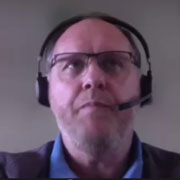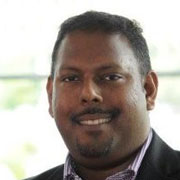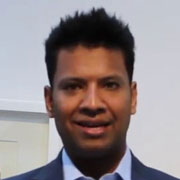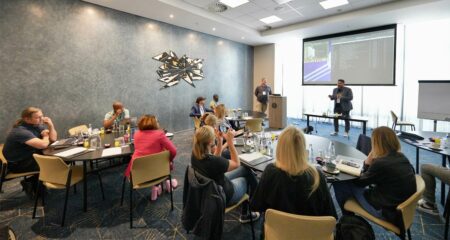 In an era of distributed computing and data-intensive business operations, it makes sense to process data at its source — the network’s edge. Edge computing seeks to help mitigate bandwidth constraints, network limitations and latency challenges that come with network and computing infrastructures distributed across the business, and across geographies.
In an era of distributed computing and data-intensive business operations, it makes sense to process data at its source — the network’s edge. Edge computing seeks to help mitigate bandwidth constraints, network limitations and latency challenges that come with network and computing infrastructures distributed across the business, and across geographies.
Gartner predicts that 75% of enterprise-generated data will be created outside of data centres or “clouds” by 2025. This provides IT leaders with opportunities and challenges.
In this roundtable, local experts gathered to discuss edge computing and the bandwidth, security and management risks it poses.

SUSE chief technology officer of enterprise cloud products Rob Knight says that for SUSE, edge computing is “about pushing the boundaries”.
“We’ve largely broken down ‘edge’ into two distinct categories, ‘near edge’ and ‘far edge’. Near edge is made up of the Internet-of-things appliances that you might have in a factory, for example — stuff that is relatively close to home. Far edge is your remote devices, 5G base stations and the like.
“What we’re trying to do at SUSE is figure out how we can connect all of that together and provide the best platform for companies to deploy their stuff on top of the edge.
“There are two elements to that: the operating system — what’s actually running on the devices — and the orchestration piece, or how do we ensure that workloads are running on the right machine in the right place at the right time? And that’s where Kubernetes comes in.”

In a way, says Gerald Pfeifer, chief technology officer at SUSE, edge computing has been around for a long time. “Look at some of your supermarket chains, or banks, where there are devices, maybe your ATMs, or cash registers. That’s edge computing; we just never called it ‘edge’, we called it ‘point of service’, for example.”
A key challenge, Pfeifer says, is that there are almost never experts at the edge. “If you have a data centre failure, you go three stories down, muttering curses and do a reset. If you have 10 000 devices with an error, at the edge — a flight away — you have a problem.”
Customers are using devices at the edge to gain additional analytics, adds Knight. “For example, we’re installing hundreds of sensors into the store that track people’s locations based on their phones’ Bluetooth beacons, and then from that we can figure out what areas in the store people are most interested in. Where should we put our more premium products? And how can we do that?”

Takealot.com engineering team lead Kurt Campher says the e-commerce company is investigating edge to solve its data problem. “We’re collecting so much data that to push all of it from the remote device to our APIs and services that are sitting in data centre and cloud services would just take too much time, and it’s too costly on bandwidth.”

BankservAfrica’s infrastructure, platform, database and technology architect, George Leonard, agrees. “Cloud providers are all about, ‘bring me your data and I’ll let you bring it into my system, I’ll give you storage for free. None of them actually tell you that, if you’re going to consume this data by analytics, potentially from your office, you’re going to have what they refer to as data ingress.” This, he says, will cost real money when cloud providers start charging for each gigabyte pulled down.

For Mr Price head of IT Adrian Smith, the retail group’s journey to edge computing started when it asked which services it wants to deliver to users and customers, and how it can improve existing services rather than looking at the technology first.
“How we get the benefits of a true cloud-native environment with all the tools that are in place — that’s really delivered the value that we need. Going from a traditional e-commerce environment with physical pins, to Kubernetes and being able to scale up has allowed us to give the experience to our customers that they’re expecting.”

One company that everyone thinks still operates completely with legacy systems is Telkom, but that’s not the case, as Zjaen Coetzee, its head of data insights management, points out. He says almost all of Telkom’s business is now built on edge, which enabled it to quickly move people to a remote working environment. “In as much as we have legacy, almost our entire business is built on edge.”
In terms of security, Coetzee says the push to remote working drove security needs much harder, and a solution that had been in the offing for seven years was completed in two months.

Executive sponsorship and business impetus are big drivers of change — or the lack thereof — in organisations.
Independent IT consultant Rishen Kyarkanaye notes that sponsorship is key, and needs to be obtained upfront. More than that though, he says: “Does the organisation want to move forward? I think that’s the key component.”

The biggest obstacles to a successful project are around culture and change management, adds head of financial services technology at BDO Nevellan Moodley. “My view in the last two years, across all projects, is that the number-one thing that lands projects in big trouble, or makes them failed projects, is lack of attention to change management.”

Government, meanwhile, is still finding its feet when it comes to the issue of cloud, says department of agriculture, land reform & rural development deputy director Themba Mnguni. As a result, data centres are still in operation because of the sensitive nature of the information being dealt with. In a year or two, however, edge computing is on the radar, he says.
“When we talk about these changes, there are some important things that we need to take into consideration: security, budget and skills – and, most importantly, don’t just change for the sake of changing,” says Mnguni.

The Unlimited is a company that is in the infancy of edge computing, but is moving into a digital world, says its head of technology, Sandra La Bella. Currently, The Unlimited is putting the foundations in place.
This, says La Bella, includes security and ensuring that each connected item has proactive alerting, which triggers artificial intelligence and machine learning. “so that by the time that we get to where we need to be, that operational efficiency is there”.
Managing risk is critical, emphasises Moodley. “You need to get your strategy right at the top, involve your risk people early and treat it as a journey.”
Knight suggests businesses just starting out on this journey start small. “You can’t revolutionise all your legacy infrastructure overnight, these things take time. Have some patience with these technologies. It is a very fast-moving space, but when it comes to the core technologies of containers and Kubernetes, they are now moving a lot slower than they used to. Because they’re gaining more enterprise adoption, and focusing a lot more on things like security and enterprise readiness. Also, find a partner that you can trust. Depending on the size of your company, you’re not going to be able to do everything yourself.”
- This promoted content was paid for by the party concerned




